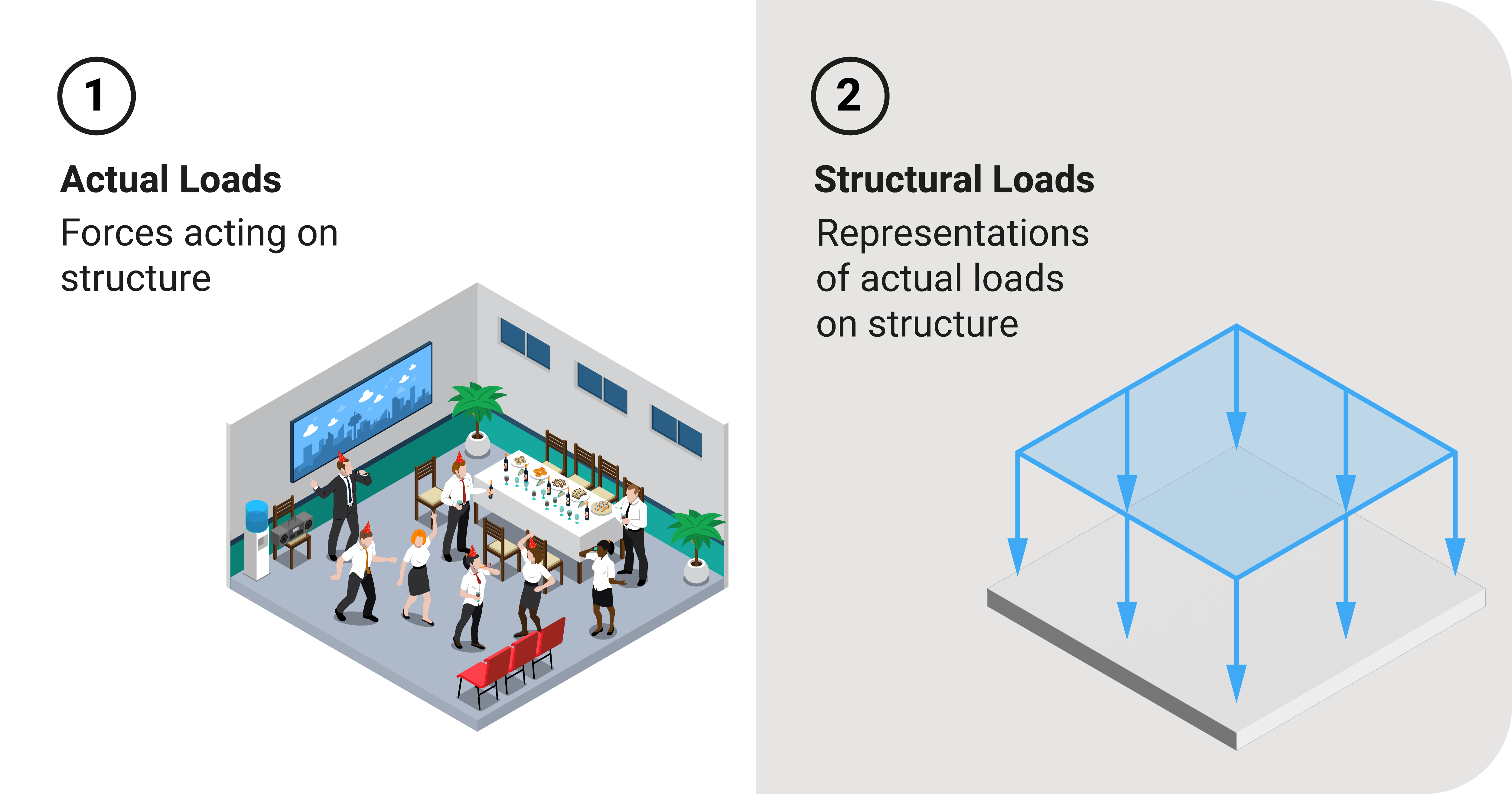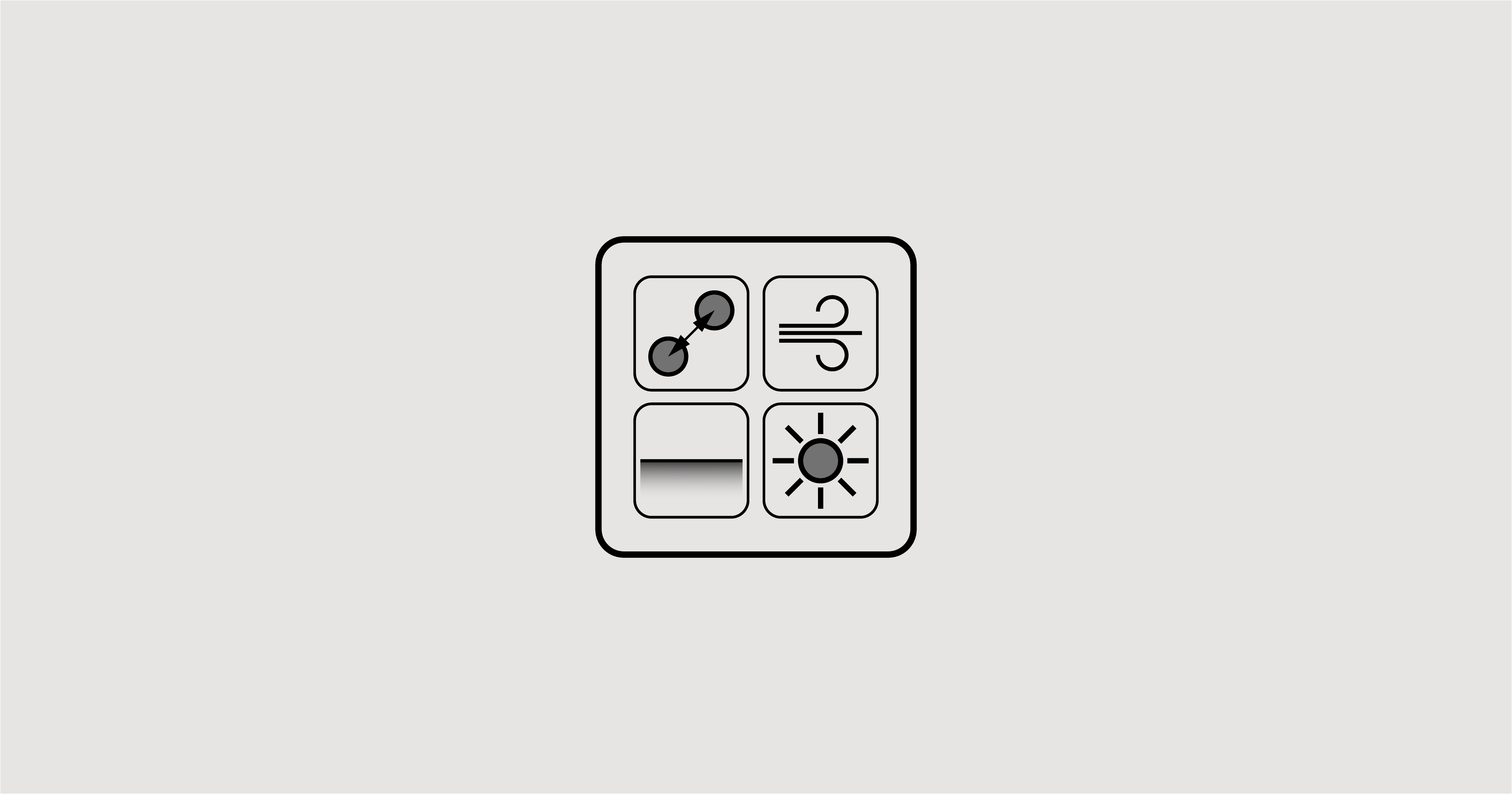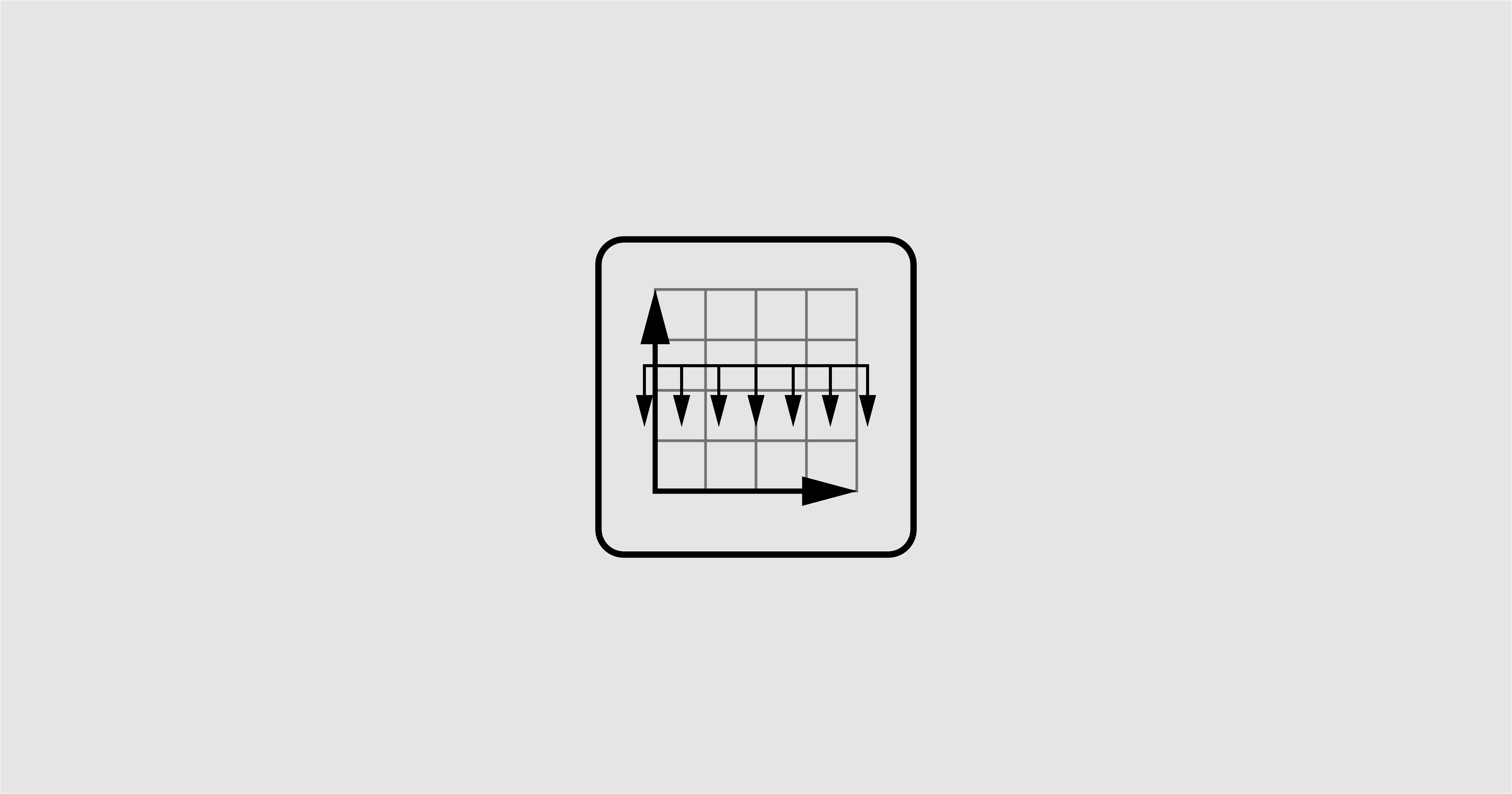After modeling the structure, the next step is to analyze the forces the building may experience. We now move on to the topic of structural loads:
Structural Loads

Structural loads are forces that cause stress and deformations to structures.
The study of loads is critical when designing structures. One must adequately identify the loads one will experience during its lifetime. Engineers must anticipate these and find ways to resist these loads; hence, these forces will dictate the design, like choosing the right section for parts of the building and the materials used.
To begin understanding loads, we answer these questions:
Where Do Loads Originate?
Loads come from different sources. Some loads come from the interaction between the building and the environment. Other loads come from how we use it.
From these different sources, a structure will experience different types of loads. To name a few, it may be:
- The weight of the building itself (dead loads)
- How people occupy the structure (live loads)
- The effects of wind and earthquake phenomena (wind and seismic loads)
How Do Loads Behave?
Loads behave in different ways depending on the type. It can vary in a lot of ways:
- Spatial application refers to the area in space the load is applied.
- Load duration tells us its period acting on a structure.
- Nature refers to the static or dynamic nature of the force.
- The rate of application refers to how nature applies the load to the structure.
- Load certainty refers to the probability that the force will occur.
How To Compute For The Loads?
Computing for loads will depend on the structural codes used. The standards will depend on the prevailing regulations within the region. There are countless building code references. Examples of these include:
- Uniform Building Code
- International Building Code
- American Society of Civil Engineers
- American Concrete Institute
- American Institute of Steel Construction
- National Building Code of Canada
- British Standards Institute
- Eurocode
- Indian Standard (IS) Code
Multiple approaches and guidelines exist for computing dead, live, wind, and seismic loads with different behavior. Most of these references already provide values one can use; therefore, one should consult these references when determining the loads of the structure.
How Do We Use These Loads In Design?
After computing the loads, we can use these in designing structures. One can already create a design from dead, live, or any other type of load by itself; however, that is only sometimes the case.
Depending on the design philosophy, we need to compute for load combinations - a load combining different force types (dead, live, etc.). This combination is what we apply to the structure; these are to simulate real-life loading scenarios. For example:
- We can combine dead, live, and seismic loads to simulate an earthquake hitting a building with people inside.
- We can combine dead, live, and wind loads to simulate a typhoon hitting a house with residents inside.
We can obtain many types of possible combinations out of these varieties. We use these to get the worst-case loading scenario and receive the highest potential force or stress a member may encounter. When we design a component using these values, we ensure that our design can resist these worst scenarios.
Summary
Structural loads are forces that cause stress and deformations to structures.
The study of loads is critical when designing structures. One must adequately identify the loads one will experience during its lifetime.
Loads come from different sources. Some loads come from the interaction between the building and the environment. Other loads come from how we use it. From these different sources, a structure will experience different types of loads.
Loads behave in different ways depending on the type.
Computing for loads will depend on the structural codes used.
After computing the loads, we create load combinations to simulate real-life loading scenarios. We use these in the subsequent design of structures.







